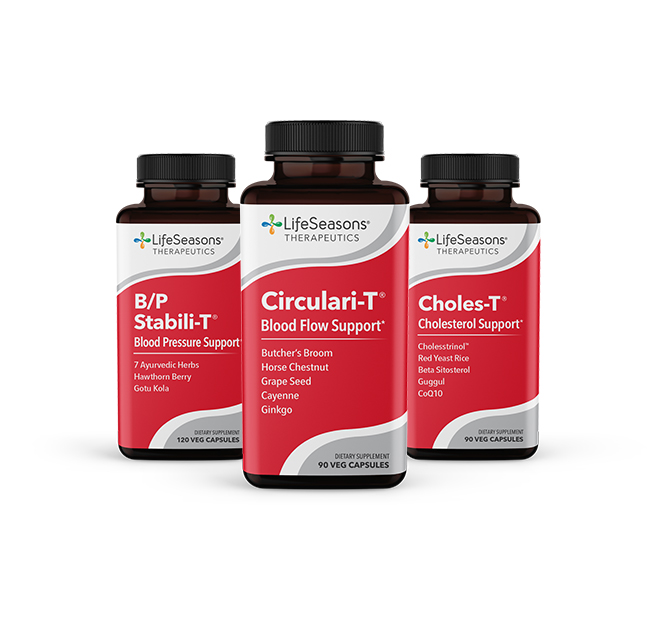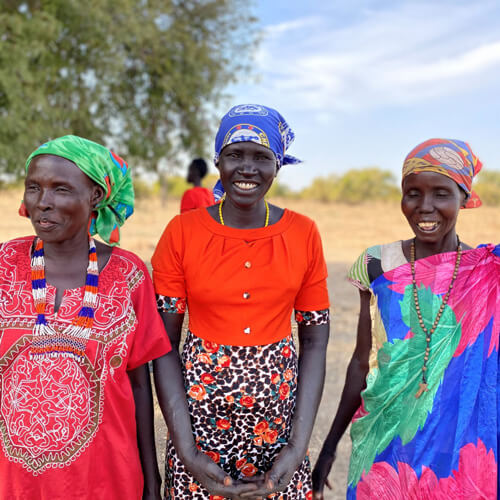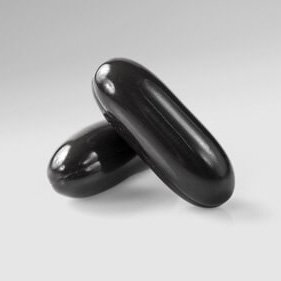WHAT IS THE FLU, STREP THROAT, AND THE COMMON COLD?
The flu is a viral infection, which causes a significant burden to individuals and our society as a whole. Many people die of flu complications and the economic burden is estimated to be double-digit billions of dollars in the United States alone (1).
As stated above, the flu is caused by a virus. Viruses are not considered a form of life, because they require a host to provide the cellular machinery to survive. Viruses invade cells and hijack the cell’s ability to create new copies of themselves. These new copies leave the host cell and continue on their journey to self-perpetuate. Often the host cells will die either by a loss of function from the overwhelming presence of the virus or by the immune system targeting the cell to stop it from assisting the virus in replication (2).
There are two primary types of flu virus, influenza virus A and B. While other viruses are occasionally implicated in flu-like symptoms and the disease course is similar, influenza virus A and B are the main causes of the flu seasonally (3).
One of the greatest concerns about the flu is not the flu itself, rather it is the infection commonly acquired after the flu, namely bacterial pneumonia. One might think that an infection like the flu would make the body’s responses stiffen and ready to fight subsequent infections; however, there is a broken immune response caused by the flu and taken advantage of by the pneumonia-causing bacteria.
The respiratory system, which includes the trachea and lungs, is equipped with a way to move the infectious materials we encounter daily up and away from the lungs to either be swallowed or spit out. It uses finger-like structures, called cilia, which grab and pass the infection laden mucous to the next cilia upwards and out the respiratory system, protecting the body from pneumonia (4). When the respiratory system is infected with the influenza virus, the lining of the tract swells to allow white blood cells to enter the area and fight the virus. The swelling is so severe in many cases that the cilia are engulfed and no longer work to swipe away bacteria which cause pneumonia. As a result, the bacteria are allowed to travel down the respiratory tract into the lungs and multiply into pneumonia. Sadly, this post flu complication ends in death for many people each year (5).
In contrast to the flu, strep throat is a bacterial infection. Bacteria are self-encapsulated living organisms which are composed of single cells. These cells find shelter and a nice environment within the body and live off the nutrients.
Strep throat is caused by a bacterium by the name of Streptococcus pyogenes, a particular kind of bacteria that is responsible for other more serious infections and complications. Because strep throat is often confused with other common infections, it should be diagnosed with a lab test which differentiates it from other causes of sore throat. An understanding of the cause of a sore throat will determine whether any treatment must be undertaken because strep throat is known to cause scarlet fever, toxic shock, and the feared complication of rheumatic fever in those who have not been treated. Rheumatic fever is similar to rheumatic arthritis in many respects. It is a disease where the immune system aberrantly attacks its own tissues throughout the body including the joints, the skin, the nervous system, and the heart (6).
Similar to the flu, the common cold is a virus. It is the most benign of the infections covered in this article, although you might feel differently when you have a cold. The common cold is caused by the Rhinovirus. The Rhinovirus prefers to infect the upper respiratory tract where air is flowing because it survives better in colder areas of the body and is sensitive to the acids in the stomach. The common cold rarely causes serious disease or complication such as pneumonia, so it is important to be able to distinguish it from the flu (6,7).
RISK FACTORS FOR FLU RELATED COMPLICATIONS
- Children younger than 2
- Those with asthma
- The immunocompromised
- Adults over the age of 65
- Pregnant Women
- Those with Diabetes (8)
SYMPTOMS OF THE FLU, COMMON COLD, AND STREP THROAT
The common cold has the well-known symptoms of stuffy nose, sore throat, and cough. Most of the symptoms subside within a week of onset, but, on average, adults take 18 days to get rid of the cough. Although these symptoms are also often found with the flu, the flu usually presents with worse symptoms and has an accompanying high fever from the onset of infection (7).
As stated above, the flu has the symptoms of the common cold with other defining features. Those features are fever and chills, aching joints, and gastrointestinal issues. The symptoms of the flu are usually more intense and for a shorter period of time than the common cold. Most often, the worst of the symptoms last two to three days and the symptoms completely subside within a week (9).
Sore throat has the main symptom of strep throat as well as the fever and body aches also seen in the flu. There also tends to be more swelling in the tonsils and in the lymph nodes of the neck than in the cold or flu (10).
For more information on the flu, common cold, and strep throat, visit cdc.gov, mayoclinic.org, or any of the references used in this article.
FLU FACTS AND STATISTICS
An average of 5%-20% of Americans contract the flu virus each year. A staggering 200,000 people are hospitalized from the flu and flu-related complications each year in the US. In the flu season of 2016 and 2017, respectively 110 and 179 children died of flu-related complications in the United States. The 2017 flu season created an estimated $11 billion dollars of economic burden. An average of 200,000 people are hospitalized each year due to the flu (1,5,11).
MEDICAL TREATMENT OF FLU, COMMON COLD, AND STREP THROAT
Prevention:
The flu and the common cold are spread through droplets in the air. The droplets can come to rest on objects nearby. If you touch these objects you can then transfer them into your body, especially if you touch your face. Hand washing is critical and trying not to touch your face is important in staying free from infections. The mainstay of the medical treatment of the flu is prevention through vaccination. As stress is a burden on the immune system and opens the windows to infection, stress management is important in the prevention of common infections (7,12).
Medications:
There are a few medications for the flu, one with the trade name Tamiflu (oseltamivir) and another called zanamivir. These medications should be administered within the first 48 hours of symptoms. They work by preventing the release of viruses from the host cell (6). The flu and common cold are viruses, so antibiotics should be avoided. Strep throat is commonly treated with penicillin, which is effective at preventing rheumatic fever. In the event of a penicillin allergy, a cephalosporin may be prescribed (13).
NATURAL WAYS TO SUPPORT IMMUNE FUNCTION
Practices that Support a Healthy Immune System:
- Getting an average of 7-9 hours of sleep for adults
- Regular exercise
- Stress relieving techniques such as yoga
- Don’t smoke
- Eat a balanced diet consisting of fruits and vegetables (14)
Natural Supplements that Help Fortify the Immune System:
- Zinc (15)
- Arabinogalactan (16)
- Olive leaf extract (17)
- Shilajit (18)
- Echinacea leaf/root extracts (19)
- Goldenseal root (20)
- Andrographis leaf extract (21)
REFERENCES
- Putri WCWS, Muscatello DJ, Stockwell MS, Newall AT. Economic Burden of Seasonal Influenza in the United States. Vaccine. 2018 Jun 22;36(27):3960-3966. doi: 10.1016/j.vaccine.2018.05.057.
- Lechtzin Noah, MD. Overview of Viral Infections. Merk Manual. https://www.merckmanuals.com/home/SearchResults?query=Evaluation+of+the+Pulmonary+Patient&icd9=MM749. Accessed August 17, 2018.
- Influenza (Flu) Viruses. Centers for Disease Control and Prevention. https://www.cdc.gov/flu/about/viruses/index.htm. Accessed August 17, 2018.
- Lechtzin Noah, MD. Defense Mechanisms of the Respiratory System. Merk Manual. https://www.merckmanuals.com/home/SearchResults?query=Evaluation+of+the+Pulmonary+Patient&icd9=MM749. Accessed August 17, 2018.
- Weekly U.S Influenza Surveillance Report. Centers for Disease Control and Prevention. https://www.cdc.gov/flu/weekly/index.htm. Accessed August 17, 2018.
- Le Tao, Vikas Bhushan, Et al. First Aid for the USMLE Step 1 2017. 27th edition. New York: McGraw-Hill Medical, 2017.
- Common Colds: Overview. PubMed Health. https://www.ncbi.nlm.nih.gov/pubmedhealth/PMH0072727/. Accessed August 17, 2018.
- People at High Risk for Developing Flu-Related Complications. Centers for Disease Control and Prevention. https://www.cdc.gov/flu/about/disease/high_risk.htm. Accessed August 17, 2018
- Symptoms and Complications. Flu. WebMD. https://www.webmd.com/cold-and-flu/flu-guide/flu-symptoms-types. Accessed August 17, 2018.
- Strep Throat. Mayo Clinic. https://www.mayoclinic.org/diseases-conditions/strep-throat/symptoms-causes/syc-20350338. Accessed August 17, 2018.
- What are Your Odds of Getting the Flu? WebMD. https://www.webmd.com/cold-and-flu/flu-statistics. Accessed August 27, 2018.
- How Flu Spreds. Centers for Disease Control and Prevention. https://www.cdc.gov/flu/about/disease/spread.htm. Accessed August 17, 2018.
- Cammar Makhtar, Dieng Assane, Boye Cheikh. Antibiotic Susceptibility of Streptococcus Pyogenes Isolated from respiratory Tract Infections in Dakar, Senegal. doi:10.4137/MBI.S12996.
- How to Boost Your Immune System. Harvard Medical School. Harvard Health Publishing. https://www.health.harvard.edu/staying-healthy/how-to-boost-your-immune-system. Accessed August 27, 2018.
- Singh M, Das RR. Zinc for the Common Cold. Cochrane Database Syst Rev. 2013:18;(6):CD001364. doi:10.1002/14651858.CD001364.pub4
- Dion Carine, Et al. Does Larch Arabinogalactan Enhance Immune Function? A Review of Mechanistic and Clinical Trials. Nutr Metab (Lond). 2016;13:28.
- Magrone T, Et al. Olive Leaf Extracts Act as Modulators of the Human Immune Response. Endocr Metab Immune Disord Drug Targets. 2018;18(1):85-93. doi: 10.2174/1871530317666171116110537.
- Johannes Laura. Do Shilajit, Other Rock Extracts Boost the Immune System? Wall Street Journal. https://www.wsj.com/articles/SB10001424127887323975004578501511309336452. Accessed August 18, 2018.
- Block KI, Mead MN. Immune System Effects of Echinacea, Ginseng, and Astragalus: a review. Integr Cancer Ther. 2003;2(3):247-67
- Goldenseal. Michigan Medicine. University of Michigan. https://www.uofmhealth.org/health-library/hn-2099007. Accessed August 18, 2018.
- Agboniahor Okhuarobo, Et al. Harnessing the Medicinal properties of Andrographis paniculata for Diseases and Beyond: a review of it Phystochemistry and Pharmacology. Asian Pac J Trop Dis. 2014;4(3):213–222.









